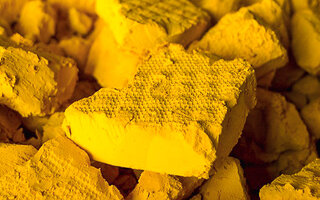Panther Minerals Inc. July 3 announced plans to carry out a long-wave infrared survey and interpretation of hyperspectral satellite imagery over the northern portion of the Boulder Creek uranium property in Alaska.Located roughly 100 miles northeast of the Gold Rush town of Nome and about 30 miles north of the village of Elim, the 22,400-acre Boulder Creek project was discovered by Houston Oil & Minerals in the 1970s. Panther Minerals Inc. Based on drilling completed in the 1980s, Boulder Creek hosts 1 million pounds of triuranium octoxide (U3O8) in a historical resource averaging 0.27% U3O8.This resource, calculated in 1987, represents only a small fraction of the overall potential along a roughly three-mile-wide corridor that extends for nearly 19 miles at Boulder Creek and is now covered by mining claims being explored by Panther.Panther’s current work is focused on the Fireweed Prospect, an earlier-staged uranium target about 12 miles northwest of the historical Boulder deposit.During exploration in 2007, Triex Minerals collected 21 samples ranging from 0.14 to 0.81% U3O8 along a 2,000-meter-long prospective area at Fireweed.At the time, Triex said the geochemical and geophysical anomalies at Fireweed were significantly larger and stronger than Boulder, indicating this prospect could contribute substantially to the overall quantities and grade of uranium with further exploration and the calculation of a modern, industry-compliant resource. Panther Minerals Inc. The uranium mineralization at Fireweed is interpreted to be related to brick red hematite-silica alteration zones hosted in intrusive rocks.Panther has hired DIRT Exploration, a South African firm that specializes in remote sensing data, to conduct the long-wave infrared survey and interpretation of high-resolution hyperspectral satellite imagery over the Fireweed prospect area.Hyperspectral satellite survey data can identify alteration minerals and patterns on surface. The ground-penetrating nature of infrared radiation in the long-wave bands allows viewing of mineral spectra to shallow depths.Panther says the long-wave infrared analysis, through proprietary processing of hyperspectral satellite data, can map or identify mineral distribution over large areas covered by vegetation and shallow cover.The data collected from this imaging work will compare and analyze imagery data over the Fireweed prospect and search for similar patterns and anomalies nearby.The association of pervasive hematite alteration identified at Fireweed will be modeled and applied over areas not covered by a radiometric survey conducted by Triex in 2006.”Utilizing the long-wave infrared survey will give us greater knowledge of the Fireweed Prospect, which will prove crucial as we ready for our first phase of exploration this summer,” said Panther Minerals CEO Rob Birmingham. “With Triex Minerals’ previous completion of a radiometric survey with a wide spacing of 200-meter lines, completing this satellite imagery will give us further insight into other potential anomalies, which will add value to the project.”Author Bio
Shane Lasley, Publisher
Over his more than 16 years of covering mining and mineral exploration, Shane has become renowned for his ability to report on the sector in a way that is technically sound enough to inform industry insiders while being easy to understand by a wider audience.
This article was published by:
Visit the original article here



